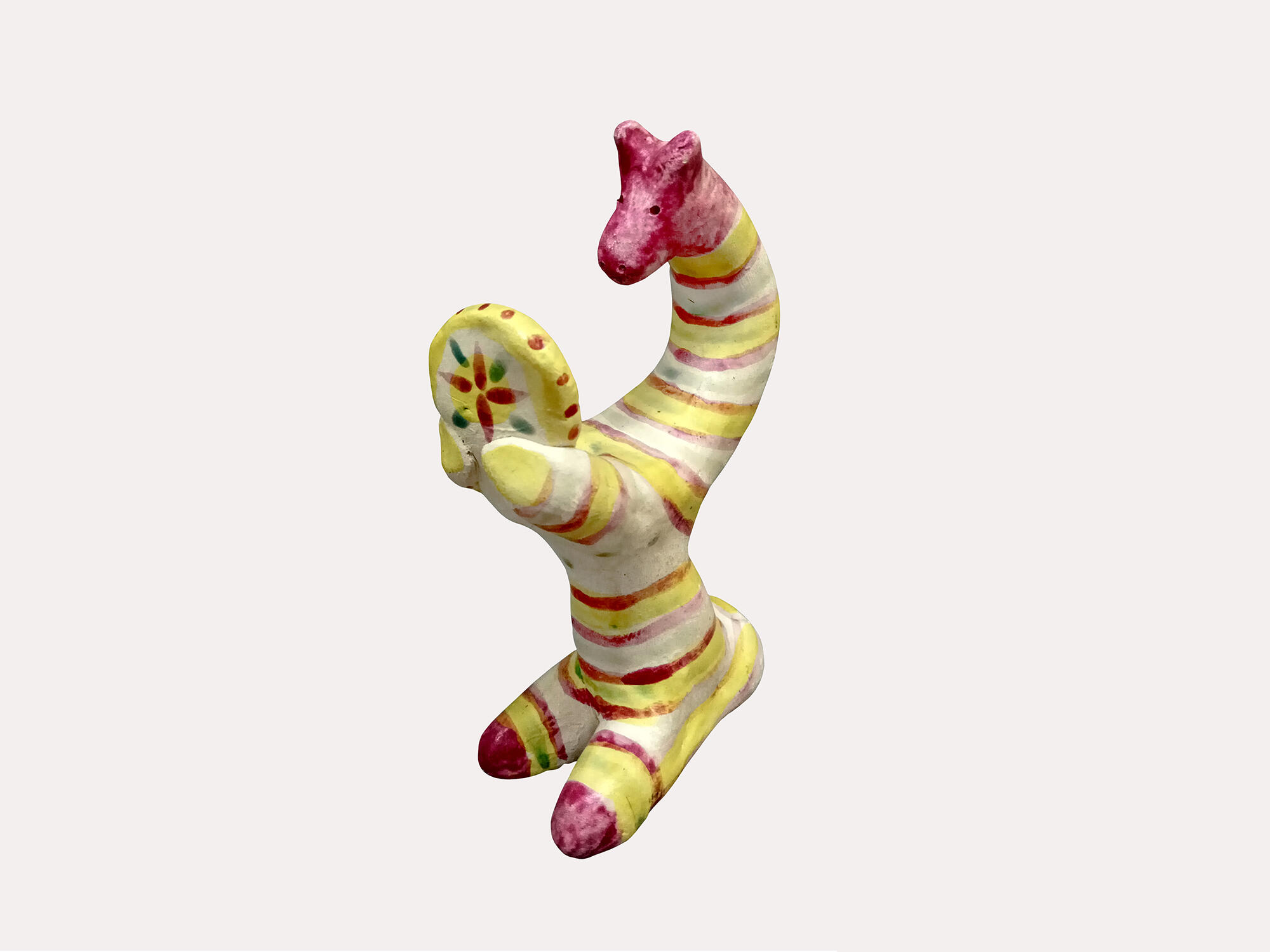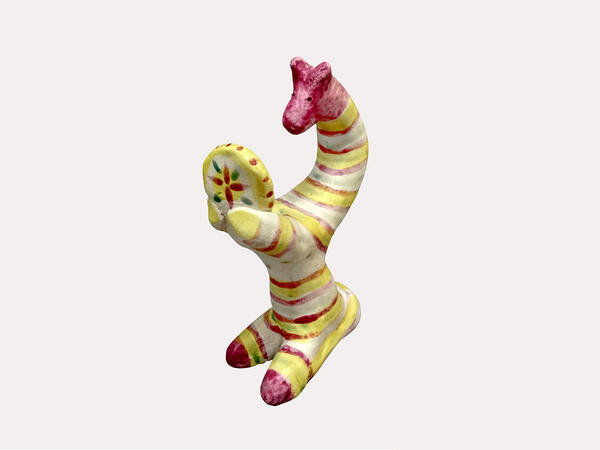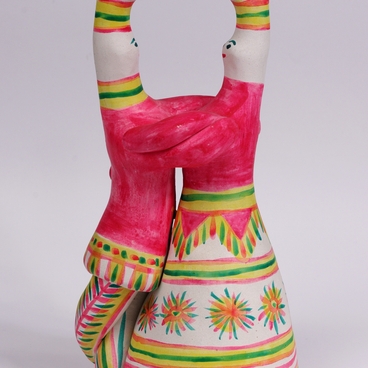This bear was designed in the tradition of the Filimonovo clay toy. Interestingly enough, all the Filimonovo figurines of animals are very much alike: the masters model them with a thin waist and a long curved neck, smoothly turning into a small head. Only the shape of the head itself, as well as the presence of horns and ears, allow distinguishing one animal from another.
A cow’s horns stretch upwards and look like crescents. Rams are modeled with round bagel-like curls. Deer are easily distinguished by their graceful antlers looking like branching trees. Horses can be recognized by their elongated triangular ears. At the same time, the figurine of a bear with a mirror is especially mysterious: the fabulous beast does not look like its real prototype at all.
The elongated proportions of the toys are not the result of a master’s whim: they relate to the properties of the local clay ‘sinika’ (blue). It is distinguished by increased greasiness and plasticity — that is why it shrinks and cracks during drying. The items have to be adjusted and smoothed several times, which leads to long beautiful lines. So the necks of absolutely all animals are gracefully elongated, and human proportions become exquisitely elegant.
Symbols are often repeated in the coloring of figurines. Many toys have the sign of the sun — they remind of earthly life, of light and warmth, without which there will be no harvest. Solar signs look like combinations of short and long lines and dots. In the bear figurine, this symbol can be found on the mirror.
The circular lines along the item are also a symbol of the sun and the goodness that the toy brings. In Pagan times, a circle represented a talisman that granted protection from the evil forces. Apart from these signs, Filimonovo toys often have a herringbone pattern — it reminds of the tree of life. The symbols of sown fields are also among the favorite ones.
The craft originated in Tula in the village of Filimonovo, approximately in the 16th century. The craftswomen passed on the secrets of their art to their children and grandchildren for generations. Many toys were designed in the post-war 1960s — 1970s when a lot of people still lived in villages. At that time, the state founded workshops known as artels, which were subordinate to the Ministry of Local Industry. But the workshop conditions, which dictated quality over quantity, greatly affected the toymaking. Nowadays, the craft is flourishing again.
A cow’s horns stretch upwards and look like crescents. Rams are modeled with round bagel-like curls. Deer are easily distinguished by their graceful antlers looking like branching trees. Horses can be recognized by their elongated triangular ears. At the same time, the figurine of a bear with a mirror is especially mysterious: the fabulous beast does not look like its real prototype at all.
The elongated proportions of the toys are not the result of a master’s whim: they relate to the properties of the local clay ‘sinika’ (blue). It is distinguished by increased greasiness and plasticity — that is why it shrinks and cracks during drying. The items have to be adjusted and smoothed several times, which leads to long beautiful lines. So the necks of absolutely all animals are gracefully elongated, and human proportions become exquisitely elegant.
Symbols are often repeated in the coloring of figurines. Many toys have the sign of the sun — they remind of earthly life, of light and warmth, without which there will be no harvest. Solar signs look like combinations of short and long lines and dots. In the bear figurine, this symbol can be found on the mirror.
The circular lines along the item are also a symbol of the sun and the goodness that the toy brings. In Pagan times, a circle represented a talisman that granted protection from the evil forces. Apart from these signs, Filimonovo toys often have a herringbone pattern — it reminds of the tree of life. The symbols of sown fields are also among the favorite ones.
The craft originated in Tula in the village of Filimonovo, approximately in the 16th century. The craftswomen passed on the secrets of their art to their children and grandchildren for generations. Many toys were designed in the post-war 1960s — 1970s when a lot of people still lived in villages. At that time, the state founded workshops known as artels, which were subordinate to the Ministry of Local Industry. But the workshop conditions, which dictated quality over quantity, greatly affected the toymaking. Nowadays, the craft is flourishing again.



